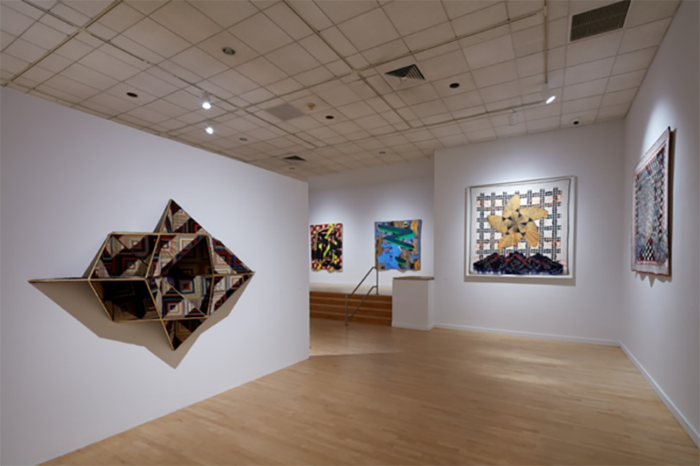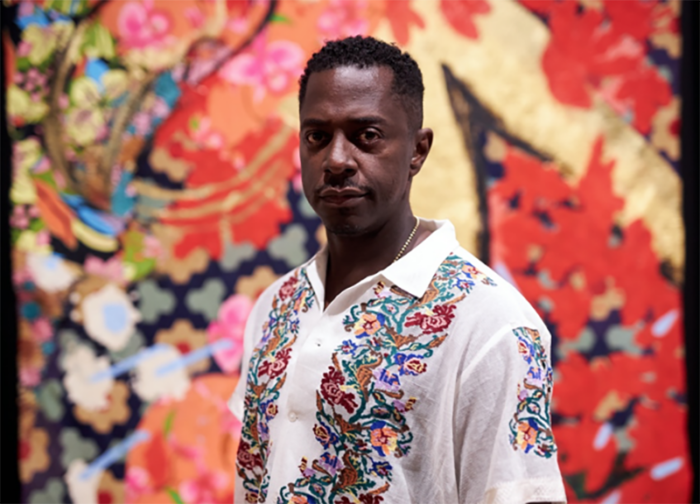
Sanford Biggers: Codeswitch is an ongoing museum exhibition expanding on the artist’s show Soft Truths at Marianne Boesky Gallery in Chelsea this fall. The exhibition at the Bronx Museum of the Arts provides a comprehensive overview of Biggers’ engagement with quilts and mixed media sculptures as parts of his multidimensional practice. More than fifty quilts at The Bronx Museum of the Arts from Biggers’ Codex series dazzle by juxtapositions and found balance. Codeswitch as the title of the show refers to an abundance of visual metaphors enabling multicultural dialogues within these textiles. The artist switches our codes of relating to the well-known symbols we can all recognize from childhood. African American, Native American, Asian visual legacies are all here forcing us to reconsider our perspectives, to name and reflect on cultures that produce and assign meanings. Basis of all these interventions are historic, pre-1900s quilts mostly produced by anonymous women or groups of women, more rarely by men. Presented quilts are either hanging on the walls inviting for inspection or restructured and then mounted in elegant, multiplane wooden wall formations.

Biggers’ choice of the medium here is as symbolic as it is intentional, using these textiles as organic links between the past of the African American art and its present practitioner. By treating quilts as power objects while being inspired by the anonymous and immensely visionary Gee’s Bend quiltmakers Biggers vacillates between reverence and tactful appropriation from other traditions. Gee’s Bend, an African American community in Alabama known for creating quilts legendary for their brilliance since the 1850s. Biggers has been influenced by these quiltmakers ever since visiting a comprehensive show at the Whitney in 2002.

He first used quilts as a medium during the 2009 commission for the Mother Bethel African Methodist Episcopal Church, a rumored stop on the Underground Railroad. It was then that the artist felt closely connected to the history of these textiles. It is widely believed that quilts were used as signposts and maps for runaway slaves on their way to freedom in the North and Canada. If the slave would go to a safe house and would find a quilt folded a certain way, he knew that the safe house was open, if it was folded another way it meant the safe house was closed; sometimes diagrams and symbols were used directly on the quilt to provide directions. Over time Biggers created his own cultural roadmap with these multidimensional quilts. He puts two different elements side by side, intervening with his own presence. Rather than appropriating two different narratives, he creates a third one that could be visually traced and understood in relation to the used symbols.
Using materials and forms that are taken from different traditions and switching them over affords Biggers an opportunity to arrive at a cultural synthesis. He creates a multilevel fabric not unsimilar to the Egyptian papyri scrolls as they unfold over time and space. Challenging the notion of what is traditionally considered high art Biggers’ quilts are maps of the future once again.



